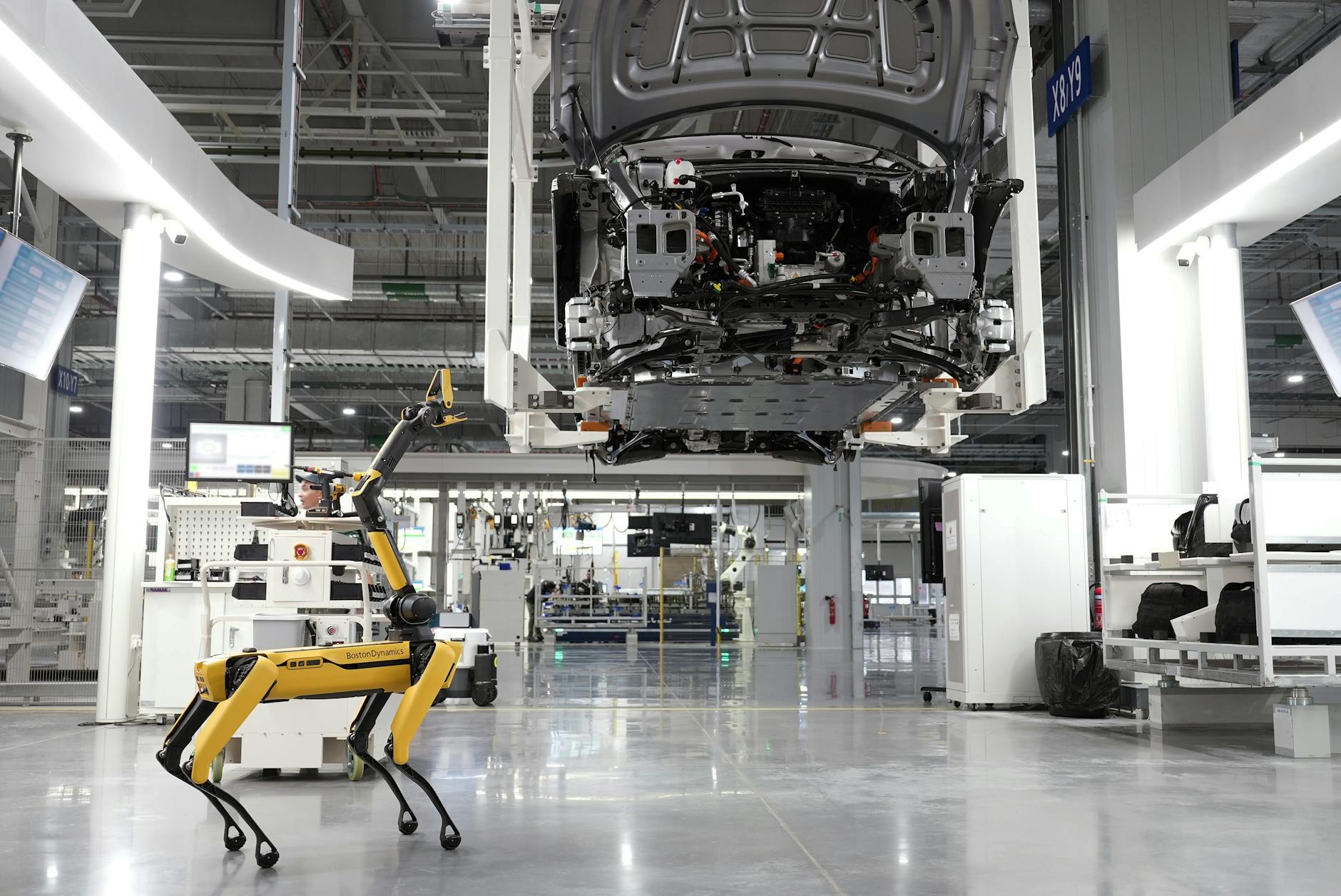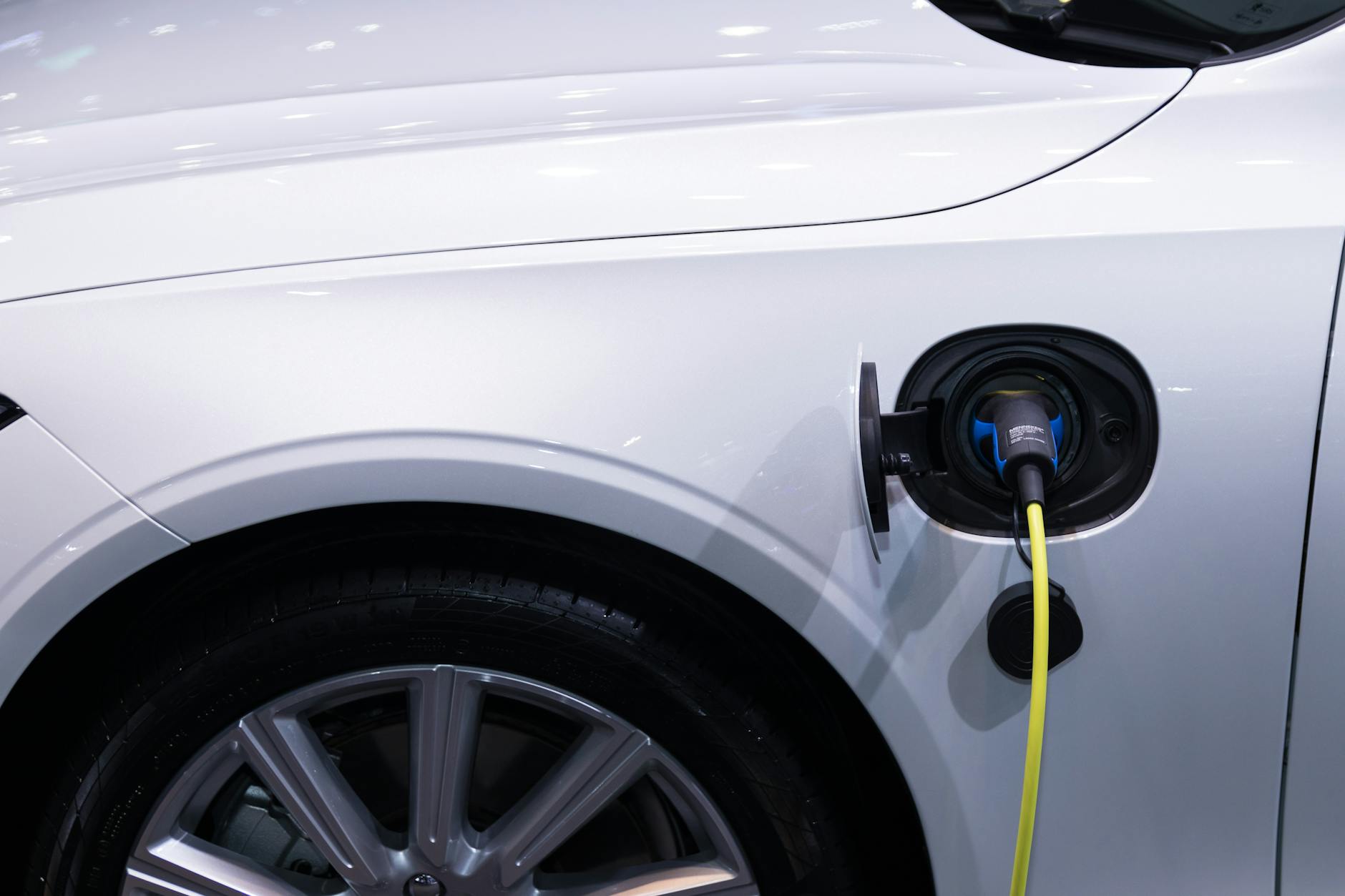The automotive world is on the brink of rapid change, and 2025 is shaping up to be a milestone year. Electric vehicles are no longer niche, but mainstream, with automakers racing to bring cutting-edge EVs to the market. Meanwhile, advancements in autonomous driving promise to redefine what it means to get from point A to B. Sustainability is taking center stage, as companies innovate with cleaner technologies and smarter designs. From AI-driven features to smarter, eco-friendly builds, the cars of 2025 are about to rewrite the way we move.
The Electrification of Vehicles
The automotive industry is gearing up for a future where electric vehicles (EVs) transition from being a luxury option to a necessity. With 2025 fast approaching, advancements in affordability, battery performance, and charging accessibility are making EVs more practical and desirable for everyone.
Affordable Electric Vehicles for All
Gone are the days when electric cars were considered out of reach for the average consumer. Newer models entering the market in 2025 are priced to compete directly with traditional gasoline-powered vehicles. Companies like Chevrolet, Tesla, and Kia have plans to introduce EVs under $30,000, boasting features like a 300-mile range on a single charge and faster charging times.
Manufacturers are pushing boundaries with cost-effective designs while ensuring they don’t compromise on safety or comfort. Initiatives like tax incentives and rebates are also helping to bring down the effective cost of owning an EV. As the market gets crowded, buyers will see more competition, leading to better deals and innovative designs. For more details on upcoming budget-friendly EV options, check out this list of affordable electric vehicles for 2025.
 Photo by Hyundai Motor Group
Photo by Hyundai Motor Group
Battery Technology Advancements
Key breakthroughs in semiconductor materials like silicon carbide (SiC) and gallium nitride (GaN) are making EV batteries more efficient and powerful. These next-gen materials increase the energy density of batteries while cutting down on charging times. What’s more, they allow for lighter and more compact designs, making EVs sleeker without reducing performance.
GaN and SiC also play a crucial role in improving how energy flows within the battery, reducing energy loss and boosting overall range. These advancements are crucial not just for performance but also for sustainability, as they allow for better recycling and reusability. Learn more about the role of battery technology in EV evolution through this comprehensive piece on SiC and GaN semiconductors.
Expanding Charging Infrastructure
Charging an EV is becoming as convenient as fueling up a gas-powered car. In 2025, charging infrastructure will experience tremendous growth, both in densely populated cities and in rural areas. Companies are forming partnerships to expand fast-charging stations across highways and essential spots like shopping malls and workplaces.
Governments are also stepping in, with the U.S. allocating $635 million in 2025 to install EV charging ports nationwide. Public and private investments are ensuring that accessibility is no longer a barrier for potential EV owners. Curious about the growing charging networks? Head over to this article on the trends shaping EV charging in 2025 to know more.
With a seamless charging experience and more widespread options, the EV transition is becoming more practical, pushing us closer to a greener transportation future.
Automation and Artificial Intelligence in Cars
The year 2025 is marking a transformational phase for automation and AI in the automotive world. Cars are becoming smarter, safer, and increasingly more autonomous, driven by advanced technologies that were once considered futuristic. Here’s how these innovations are changing the driving experience.
Advanced Driver Assistance Systems (ADAS)
Today, Advanced Driver Assistance Systems (ADAS) are no longer confined to high-end luxury cars. In 2025, features like lane-keeping assistance, adaptive cruise control, and automated emergency braking are becoming standard across a broader range of vehicles. These systems are designed with one primary target: preventing accidents and improving road safety.
Key ADAS features include:
- Lane-Keeping Assistance: Steers the car back into the lane if it detects unintentional drifting.
- Adaptive Cruise Control: Automatically adjusts speed to maintain a safe distance from the vehicle ahead.
- Automated Emergency Braking: Detects potential collisions and applies brakes to avoid or mitigate impact.
Thanks to advancements in vehicle sensors, radar, and cameras, these technologies work together to create a synchronized safety net. According to insights shared by HERE’s Ultimate Guide to 2025 Connected Driving Features, the accessibility of these functionalities improves the overall driving experience while reducing human error.
Level 2 Autonomy as the New Standard
While full self-driving vehicles (Level 5 autonomy) are still a work in progress, Level 2 autonomy systems are becoming a norm in 2025 cars. These systems provide combined control of steering, braking, and acceleration while requiring the driver’s supervision. Imagine hands-free driving in slow traffic or automated highway cruising where the car keeps itself centered in the lane—this is the reality now.
Manufacturers like Tesla, Mercedes-Benz, and Ford are leading the way by integrating these technologies into their new models. Enhanced sensor fusion, combining data from LiDAR, radar, and cameras, ensures the car can respond effectively to real-time road scenarios.
Governments and consumers alike are embracing this shift. A report from GlobeNewswire highlights the increasing demand for vehicles equipped with Level 2 systems as confidence in autonomous driving features grows.
 Photo by Hyundai Motor Group
Photo by Hyundai Motor Group
AI-Powered Features
Artificial intelligence is enhancing more than just the driving mechanics. Cars in 2025 are integrating AI-powered features that redefine convenience and personalization. For example:
- Conversational Interfaces: Voice-activated systems in cars are getting smarter with AI. Instead of basic commands, these systems can engage in dynamic conversations. Want to reroute to a nearby coffee shop? Just ask.
- AI Dashcams: Dashcams now come equipped with AI capabilities, providing real-time monitoring of the driver’s behavior, detecting road hazards, and even automatically reporting collisions.
- Real-Time Data Processing: AI models can analyze live data to provide predictive maintenance updates, dynamic route optimizations, and relevant safety alerts.
AI is essentially acting as your co-pilot, ensuring everything from a smoother ride to proactive vehicle management. Learn more about these features at SP Global’s breakdown of AI trends in vehicles for 2025.
The shift toward AI in vehicles doesn’t just provide tools for drivers; it’s making the entire driving system more intuitive. The smarter the car, the easier and safer our lives become. In 2025, cars aren’t just machines—they’re becoming intelligent companions on the road.
Sustainability Beyond Electric Vehicles
The conversation around sustainability in the automotive world often begins and ends with electric vehicles (EVs). However, the industry is advancing far beyond just electrification, with manufacturers adopting practices that holistically reduce their environmental footprint. Let’s explore some of these innovations reshaping the way cars are produced.
Use of Recycled and Renewable Materials
Automakers are taking a hard look at the materials that go into their cars. Beyond traditional metals and plastics, manufacturers are now incorporating recycled materials like reclaimed steel and aluminum, which cut down on resource extraction. Additionally, bioplastics, derived from renewable sources such as cornstarch and sugarcane, are entering the mix, offering a sustainable alternative to petroleum-based plastics.
Car interiors are also seeing a green makeover. Instead of traditional leather, brands are showcasing vegan leather alternatives made from pineapple leaves or cactus fibers. BMW, for example, has incorporated fabrics woven from recycled ocean plastics into their latest models. The aim? Aesthetic and durable designs that tread lightly on the environment.
Sustainable materials not only reduce waste but also open doors to innovation. Companies like Audi are exploring advanced processes to recycle fiber in carbon composites—resulting in a win-win for both performance and sustainability. For more on how recycled and renewable resources are transforming car manufacturing, you can check out this comprehensive overview.
 Photo by Rathaphon Nanthapreecha
Photo by Rathaphon Nanthapreecha
Carbon-Neutral Manufacturing Practices
While EVs may reduce emissions on the road, their production can still leave a heavy carbon footprint. Recognizing this, automakers are focusing on carbon-neutral manufacturing by opting for cleaner and renewable energy sources. Plants powered by solar, wind, and hydroelectric energy are already becoming industry standards.
A spotlight is also on the circular economy approach. Instead of discarding old parts, manufacturers are designing components to be reused or upcycled. Volvo, for example, has committed to using 25% recycled plastics in their car builds by 2025. Additionally, they aim to make their factories completely climate neutral by leveraging energy-efficient processes.
Not stopping there, companies are engaging with their supply chains to ensure every aspect—from mining of raw materials to component assembly—meets stringent sustainability benchmarks. Want to learn more about carbon-neutral strategies transforming the automotive space? This resource from Businesswise Solutions provides deeper insights.
By reducing emissions during production and adopting greener practices, automakers are setting a new bar for what sustainability means in car manufacturing. These advancements quietly revolutionize the industry—making cars that are better not just on the road, but for the planet.
Connected and Software-Defined Vehicles
The future of automotive technology goes far beyond electrification. By 2025, cars are evolving into software-defined, connected systems, merging functionality with adaptability. These vehicles are designed to improve over time, integrate with our digital lives, and deliver an unparalleled driving experience. Let’s explore how this connectivity is reshaping cars.
Over-the-Air (OTA) Updates: Driving The Upgrade Evolution
Gone are the days when updating your vehicle required a trip to the dealership. Over-the-Air (OTA) updates are transforming cars into devices that evolve continuously. Much like your smartphone downloads new features and security patches, vehicles in 2025 receive software upgrades directly, no matter where they are.
Advantages of OTA Updates:
- Enhanced Performance: Automakers can roll out performance boosts, updates, and even entirely new features without requiring a service visit. For instance, Tesla frequently improves driving range through software tweaks alone.
- Cost Savings: OTA eliminates dealership visits, reducing costs for both automakers and car owners.
- Security: As cyber threats grow, OTA updates constantly refresh vehicle security protocols, ensuring your car is protected from evolving risks.
- Custom Features Over Time: Buyers can unlock premium features post-purchase—think of this as upgrading memory on your device but for your car.
Curious to dive deeper into how OTA updates are redefining vehicle maintenance? Read this insight into the advantages of OTA in vehicles.
5G and Enhanced Connectivity: Real-Time Like Never Before
5G is the backbone of connectivity for the cars of 2025. Its high-speed, low-latency nature ensures vehicles can process vast amounts of data in real-time, enhancing both the driving and in-car entertainment experience.
Here’s how 5G is reshaping connectivity:
- Infotainment on Demand: Stream 4K Netflix shows or browse the web without buffering.
- Real-Time Updates: Dynamic navigation systems adapt instantaneously to road congestion, accidents, or weather changes.
- V2X Communication: Vehicles talk to one another (Vehicle-to-Vehicle, V2V) and with infrastructure (Vehicle-to-Infrastructure, V2I), increasing road safety by efficiently predicting and avoiding collisions.
- Autonomous Synergy: Self-driving features depend on swift and seamless communication—5G keeps them in sync and responsive.
Want to explore more about how 5G is powering future cars? Check out this detailed look at 5G’s impact on connected vehicles.
Smart Home Integration: Cars That Sync With Your Life
Imagine arriving home and your car automatically turns on your porch lights and adjusts your thermostat. Smart home integration is no longer a futuristic idea—it’s standard in 2025. Cars are now an extension of your connected ecosystem.
Key smart home features include:
- Voice-Controlled Commands: From your car, you can lock your front door, view home cameras, or even preheat the oven before arriving.
- Compatibility With IoT Devices: Systems like Apple CarPlay and Android Auto seamlessly integrate with smart devices, enabling full home control while driving.
- Smart Assistant Support: Vehicles now sync with Alexa, Google Assistant, or Siri, making daily routines effortless and automated.
For those exploring the synergy between connected cars and smart homes, this article on smart home-tech in the latest vehicles breaks it down further.
 Photo by RDNE Stock project
Photo by RDNE Stock project
The connected vehicle revolution is more than just improving commutes; it’s about creating cars that work seamlessly within our hyper-connected lives. Whether through periodic updates, lightning-fast 5G, or IoT integration, the cars of 2025 are not just smarter—they’re indispensable.
Comfort and Personalization in Modern Cars
As we head into 2025, modern vehicles are redefining what it means to drive in comfort and style. The shift from standard interiors to highly customized and technologically advanced solutions ensures that both drivers and passengers enjoy a seamless experience tailored to their needs. Let’s explore how comfort and personalization are taking the spotlight in modern cars.
Ergonomic and Biometric Comfort Features
 Photo by RDNE Stock project
Photo by RDNE Stock project
For decades, car interiors focused on basic utility. Modern cars, however, are integrating smart ergonomic designs and biometric solutions that enhance comfort and safety. Imagine a seat that adjusts itself based on your posture, weight, and even body temperature—2025 vehicles are making it possible.
Key innovations include:
- AI-Driven Seats: Seats equipped with sensors can subtly shift to alleviate pressure points on your back and legs during long drives.
- Biometric Integration: Cars now utilize facial recognition and heart rate monitors to assess the driver’s stress and fatigue levels. If you’re feeling drowsy, the system can issue alerts or automatically adjust cabin elements like lighting and music to keep you alert.
- Temperature and Humidity Controls: Adaptive climate systems can fine-tune cabin temperature and humidity based on external weather conditions and individual preferences.
This convergence of AI and biometrics makes driving not just more comfortable but safer as well. The progression demonstrates manufacturers’ commitment to delivering vehicles that truly understand and respond to human needs. For deeper insights into automotive comfort technologies, check out this feature on emerging automotive trends for 2025.
Luxury Personalization Options
Personalization in luxury cars has reached new heights. Manufacturers are transforming vehicles into expressions of individual taste and lifestyle, offering bespoke interiors that go far beyond standard trims and finishes.
Here are some standout customization options:
- Dynamic Ambient Lighting: Multi-color LED lighting systems allow drivers to set their preferred cabin mood for different times of the day or occasions. Whether you want a soft relaxing glow or bright energizing tones, the cabin adjusts instantly.
- Premium Material Choices: From quilted Alcantara to carbon fiber details, there’s no shortage of premium material upgrades to elevate the look and feel of your ride.
- Artisan-Level Craftsmanship: Luxury automakers like Bentley and Genesis now offer handcrafted features, such as personalized embroidery or steering wheels lined with exotic wood sourced sustainably.
- Digital Personalization: AI-driven settings will adapt audio, navigation, and even seat positions based on the driver’s routines and preferences.
Customization doesn’t just stop with aesthetics; performance tweaks like adjusting drivetrain modes and suspension tuning can also be tailored based on user needs. If you’re curious about personalization trends dominating 2025 luxury cars, this overview on luxury car trends for 2025 provides more details.
For drivers who demand more than just a mode of transport, these innovations ensure that stepping into a car feels like stepping into a personal sanctuary—a space uniquely yours.
Anticipated Top Models of 2025
As 2025 approaches, the auto industry is brimming with excitement over vehicles that promise innovation, efficiency, and groundbreaking designs. Whether you’re a fan of electric cars, hybrids, or traditional gas-powered vehicles, these anticipated top models of 2025 showcase the best of what’s to come.
Innovative Features of Leading EV Models
 Photo by LML 6768
Photo by LML 6768
The electric vehicle (EV) market is set to reach new heights in 2025 with models like the Tesla Model Y, Kia EV9, and Chevrolet Silverado EV leading the charge. Here’s a look at their standout features:
- Tesla Model Y: Known for its innovative technology, the Model Y features an all-glass roof, advanced autopilot capabilities, and over-the-air software updates that keep the car continually improving. It offers an impressive 326 miles of range on a single charge, blending efficiency with comfort.
- Kia EV9: As an all-electric SUV, the Kia EV9 is redefining practicality and luxury. With its spacious interior, advanced infotainment features, and a range that competes with Tesla, it’s a family-friendly option designed with high-tech precision. Want to learn more? Here’s a detailed comparison between the Tesla Model Y and Kia EV9.
- Chevrolet Silverado EV: This electric pickup truck merges power and sustainability. Its multi-flex tailgate, tow-friendly design, and fast-charging capabilities make it a game-changer in the EV truck market. It’s built for utility without compromising the environment.
Electrification is about more than just engines; it’s about connected technology, better safety, and seamless integration into your lifestyle.
High-Tech Designs in Hybrid and Gas-Powered Vehicles
Even as EVs dominate headlines, hybrid and gas-powered vehicles are proving they’re far from obsolete. The Toyota Prius and Honda Accord Hybrid are both stepping up their game with impressive updates.
- Toyota Prius: The 2025 Prius combines stunning aesthetics with a tech-filled interior. It features a sleek, futuristic design and offers improved hybrid fuel efficiency. Inside, there’s a 12.3-inch touchscreen for navigation and advanced driver-assistance features for safety.
- Honda Accord Hybrid: Building on its reputation for reliability, the Accord Hybrid incorporates advanced features like a head-up display, adaptive cruise control, and a more intuitive infotainment system. With an upgraded powertrain, it rivals even full-EVs in smooth performance. Explore the differences between the Accord Hybrid and Prius Hybrid to see which fits your style.
These models prove that innovation doesn’t have to mean abandoning gas or hybrid technology. They strike a balance between traditional driving pleasure and the efficiency of modern tech.
Conclusion
The cars arriving in 2025 represent more than just a leap in automotive technology—they signify a shift in how we view mobility. From electric innovation and advanced AI systems to sustainable materials and personalized luxury, the industry is reimagining the driving experience.
As manufacturers compete to bring smarter, safer, and more eco-friendly vehicles to market, this year is shaping up to deliver choices that cater to every lifestyle. Whether you’re ready to embrace cutting-edge EVs, explore the benefits of autonomy, or prioritize sustainability, the options are endless.
Stay ahead by exploring what’s next and considering the trends shaping this pivotal year. What feature or innovation excites you most about cars in 2025?



